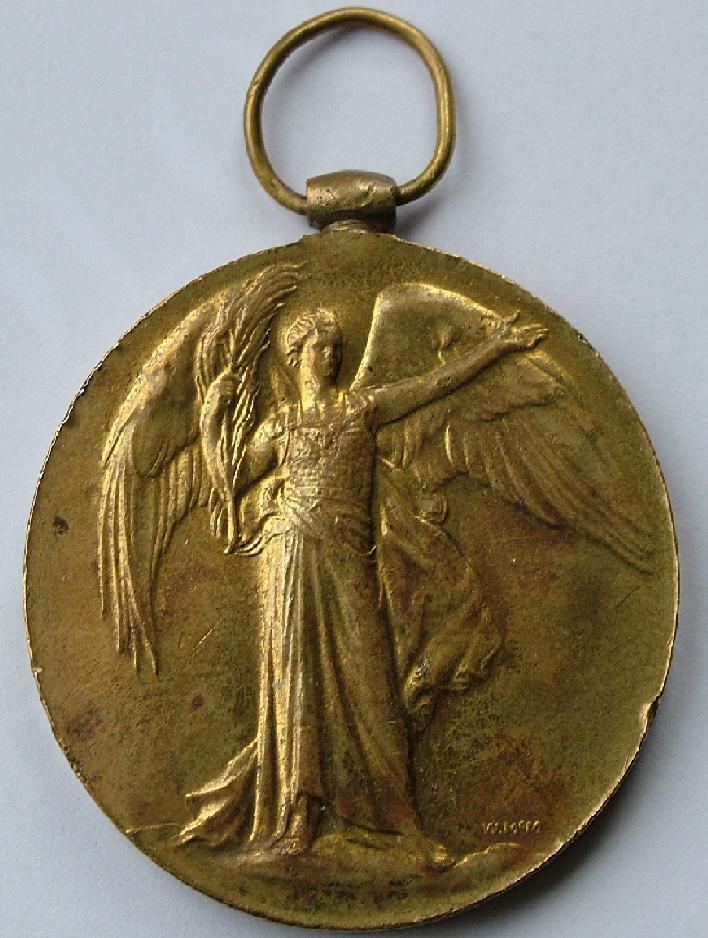Clasps None | Awarded for Campaign service. | |
 | ||
Eligibility British and Imperial forces. Campaign(s) First World War 1914-20. Description Bronze disk, 36mm diameter. | ||
The Victory Medal (also called the Inter-Allied Victory Medal) is a United Kingdom and British Empire First World War campaign medal.
Contents
The design and ribbon was also adopted by Belgium, Brazil, Cuba, Czechoslovakia, France, Greece, Italy, Japan, Portugal, Romania, Siam, Union of South Africa and the USA in accordance with the decision of the Inter-Allied Peace Conference at Versailles (a 'Winged Victory). A particular form of this historic Greek monument was chosen by each nation, except the nations in the Far East who issued the medal but with a different design. The dates of the war were in every case 1914 to 1918, except that of the British Empire, which gave the dates as illustrated (1914 to 1919).
The medal was issued to all those who received the 1914 Star or the 1914–15 Star, and to most of those who were awarded the British War Medal - it was not awarded singly. These three medals were sometimes irreverently referred to as Pip, Squeak and Wilfred.
Eligibility
To qualify for the Victory Medal recipients had to be mobilised for war service in the United Kingdom or the British Empire, in any service, and to have entered a theatre of war between 5 August 1914 and 11 November 1918. Women qualified for this and the earlier two medals, for service in nursing homes and other auxiliary forces.
It was also awarded to members of the British Naval mission to Russia 1919 - 1920, and for mine clearance in the North Sea between 11 November 1918 and 30 November 1919.
Description
International award
As well as the United Kingdom, a significant number of allied and associated countries involved in the conflict against the Austro-German alliance issued a Victory Medal.
The proposition of such common award was first made by French marshal Ferdinand Foch who was supreme commander of the allied force during the war. Each medal in bronze has the same diameter (36 mm) and ribbon (double rainbow) but with a national design representing a winged victory except for Japan and Siam where the concept of a winged victory was not culturally relevant.
In popular culture
The 2005 book The Great War for Civilisation by Robert Fisk takes its title from the reverse legend of the medal, although it is not about the First World War.
